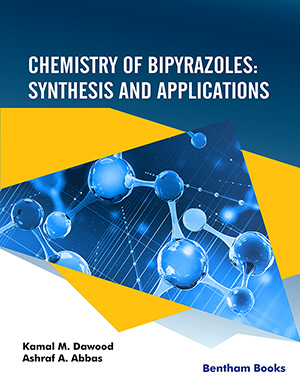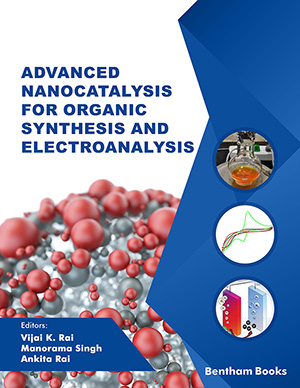
Abstract
Background: The incorporation of selenium (Se) atom onto organic scaffolds is a very promising approach to obtain more active and selective compounds against several types of cancer. During the last decade, a plethora of organoselenium compounds have been reported with very potent anticancer activity through diverse mechanisms of action, some of the most interesting being autophagy, angiogenesis, affectation of cancer stem cells and lethal mitosis. Several studies have related Se status and different selenoproteins with the development of Leishmania. Furthermore, one of the most used approaches for seeking new antitrypanosomal drugs is the drug repositioning. Considering both facts, our research group is developing organoselenium derivatives with dual activity against cancer and Leishmaniasis.
Objective: The objective of this review is to gather, for the first time, every organic selenocompound with this dual activity. Thereby, the synthetic procedures will be discussed, along with their most important biological effects in both pathologies.
Conclusion: To conclude, the reported results show that the introduction of Se atom onto organic molecules is a valid rational approach to obtain dual anticancer/leishmanicidal agents. Furthermore, the synthetic procedures needed are quite straightforward and occur with good yields. Thus, bisacylimidoselenocarbamates and diselenides are very good candidates to further develop as dual agents.
Keywords: Biological activity, bisacylimidoselenocarbamates, cancer, diselenides, dual activity, leishmanial, selenium, synthesis.
Current Organic Synthesis
Title:Selenium Entities: Promising Scaffolds for the Treatment of Cancer and Leishmania
Volume: 14 Issue: 8
Author(s): Carmen Sanmartin*, Ana Carolina Ruberte, Elena Ibanez, Esther Moreno, Socorro Espuelas and Daniel Plano
Affiliation:
- Department of Organic and Pharmaceutical Chemistry, Faculty of Pharmacy and Nutrition, University of Navarra, Irunlarrea, 1, E-31008, Pamplona,Spain
Keywords: Biological activity, bisacylimidoselenocarbamates, cancer, diselenides, dual activity, leishmanial, selenium, synthesis.
Abstract: Background: The incorporation of selenium (Se) atom onto organic scaffolds is a very promising approach to obtain more active and selective compounds against several types of cancer. During the last decade, a plethora of organoselenium compounds have been reported with very potent anticancer activity through diverse mechanisms of action, some of the most interesting being autophagy, angiogenesis, affectation of cancer stem cells and lethal mitosis. Several studies have related Se status and different selenoproteins with the development of Leishmania. Furthermore, one of the most used approaches for seeking new antitrypanosomal drugs is the drug repositioning. Considering both facts, our research group is developing organoselenium derivatives with dual activity against cancer and Leishmaniasis.
Objective: The objective of this review is to gather, for the first time, every organic selenocompound with this dual activity. Thereby, the synthetic procedures will be discussed, along with their most important biological effects in both pathologies.
Conclusion: To conclude, the reported results show that the introduction of Se atom onto organic molecules is a valid rational approach to obtain dual anticancer/leishmanicidal agents. Furthermore, the synthetic procedures needed are quite straightforward and occur with good yields. Thus, bisacylimidoselenocarbamates and diselenides are very good candidates to further develop as dual agents.
Export Options
About this article
Cite this article as:
Sanmartin Carmen *, Ruberte Carolina Ana , Ibanez Elena , Moreno Esther , Espuelas Socorro and Plano Daniel , Selenium Entities: Promising Scaffolds for the Treatment of Cancer and Leishmania, Current Organic Synthesis 2017; 14 (8) . https://dx.doi.org/10.2174/1570179414666170517153921
| DOI https://dx.doi.org/10.2174/1570179414666170517153921 |
Print ISSN 1570-1794 |
| Publisher Name Bentham Science Publisher |
Online ISSN 1875-6271 |
Call for Papers in Thematic Issues
Biorthogonal Chemistry: A translational chemical tool for in vivo applications
After the discovery in 1990, bioorthogonal chemistry encompassed a set of diverse fast-paced selective chemical reactions, facilitating the study of biomolecules under physiological aura without intervening in the biochemical processes. Over the past two decades, significant progress has been witnessed in bioorthogonal reactions such as Staudinger ligation, metal-catalyzed coupling reactions, ...read more
Design and Synthesis of Green Pesticides
The development of green new pesticides is currently one of the hotspots in the field of pesticide research, aiming to develop efficient, environmentally friendly, and safe pesticide products to meet the needs of modern agricultural production. Green new pesticides prioritize environmental friendliness and ecological safety. Therefore, during the research and ...read more
Exploring the Role of Chemical Graph Theory in Advancing Current Organic Synthesis
Organic synthesis is a fundamental discipline in chemistry, crucial for the creation of complex molecules with diverse applications in pharmaceuticals, materials science, and beyond. However, the process of designing efficient synthetic routes for target molecules remains challenging. Chemical graph theory, a branch of theoretical chemistry, offers powerful tools for understanding ...read more
Novel Green Approaches in the Synthesis of Bioactive Molecules
This special issue regards several aspects of green chemistry, focusing on innovative strategies to run organic synthesis reactions in a more environmentally friendly. Interesting articles or reviews about the critical role of green methodologies in reducing the environmental impact of chemical processes are welcome. Moreover, novel methodological studies using sustainable ...read more
Related Journals
 62
62 2
2 1
1
- Author Guidelines
- Graphical Abstracts
- Fabricating and Stating False Information
- Research Misconduct
- Post Publication Discussions and Corrections
- Publishing Ethics and Rectitude
- Increase Visibility of Your Article
- Archiving Policies
- Peer Review Workflow
- Order Your Article Before Print
- Promote Your Article
- Manuscript Transfer Facility
- Editorial Policies
- Allegations from Whistleblowers
Related Articles
-
FAK and Nanog Cross Talk with p53 in Cancer Stem Cells
Anti-Cancer Agents in Medicinal Chemistry Nanoparticulate Drug Delivery Sytem for Cancer Therapy: Oppourtunities and Challenges
Recent Patents on Nanomedicine Roles of UDP-Glucuronosyltransferases in Phytochemical Metabolism of Herbal Medicines and the Associated Herb-Drug Interactions
Current Drug Metabolism The Role of Cytokines in Interactions of Mesenchymal Stem Cells and Breast Cancer Cells
Current Stem Cell Research & Therapy A Review on the Efficacy and Safety of Intrathecal Administration of Novel Medications for Leptomeningeal Metastases in Solid Cancers
Current Medicinal Chemistry Editorial
Current Medical Imaging Prodrug Design of Phenolic Drugs
Current Pharmaceutical Design Caffeic Acid, A Versatile Pharmacophore: An Overview
Mini-Reviews in Medicinal Chemistry Targeting Angiogenesis in Renal Cell Carcinoma
Current Cancer Drug Targets Structure Prediction of Neuroendocrine Convertase -2: A Potential Target in Various Cancers
Protein & Peptide Letters Evaluation of Novel Radioiodinated C7-substituted Δ6,7 – estradiol Derivatives for Molecular Recognition of ER-Positive Breast Tumours
Current Radiopharmaceuticals Tyrosine Kinase Inhibitors: A Potential Approach to the Treatment of Hepatocellular Carcinoma
Current Pharmaceutical Design The Changing Role of Radiation in the Post-TME ERA of Rectal Cancer
Current Cancer Therapy Reviews Comparative Efflux of Saquinavir, Ritonavir and Lopinavir from Primary Human Cells
Drug Metabolism Letters Understanding Cancer Drug Resistance by Developing and Studying Resistant Cell Line Models
Current Cancer Drug Targets Biological Activities of Eco-Friendly Synthesized Hantzsch Adducts
Medicinal Chemistry The Role of Hypoxia in Endometrial Cancer
Current Pharmaceutical Biotechnology Molecular Targeted Therapy in Prevalent Tumors: Learning from the Past and Future Perspectives
Current Clinical Pharmacology Natural Products Containing Olefinic Bond: Important Substrates for Semi-synthetic Modification Towards Value Addition
Current Organic Chemistry Pharmacologic Ovarian Preservation in Young Women Undergoing Chemotherapy
Current Medicinal Chemistry

























